Table of Contents
Vendor Consignment Process in SAP
Consignment means that the goods procured are still in vendors ownership, but our company is keeping the material in stock and is able to sell it directly. Goods become the property of our company only when they are transferred to company normal goods stock. So there are separate storage location for consignment goods and normal goods. Our company becomes payable to vendor to pay for goods when they are transferred from Consignment storage location to normal goods storage location. Key.
Process Design for the Consignment process for Vendors in SAP
- Consignment has been designed as a special procurement type in SAP.
- Consignment PO is generally of materials which are regularly purchased from one / more vendors.
- Consignment PO does not have a purchase price.
- When Consignment materials are received from Vendor, Goods receipt is created (MIGO). However, this stock is received in Consignment storage location. It’s ownership still lies with Vendor. Thus, no Financial documents are posted on goods receipt of Consignment stock.
- When Consignment stock is to be consumed, it is transferred to regular storage location from Consignment storage location. Stock Transfer posting (MB1B). Finance documents is generated as Consignment goods transferred to normal storage. These are valued at PIR (Purchase Info record) maintained for the Material, Plant & Vendor combination (ME11)
- When goods are to be consumed, settlement is carried out using Transaction code MRKO. At this liability arises to pay vendor. Thus vendor invoice for consignment goods created in transaction code MRKO and not in Transaction code MIRO
- Vendor is billed at PIR price. Goods are consumed at Standard price. Difference between PIR & Standard Price appears as PPV (Purchase Price Variance).
We will now go through each of these steps in SAP.
Create Purchase Info Record to value Consignment Goods
Transaction Code: ME11
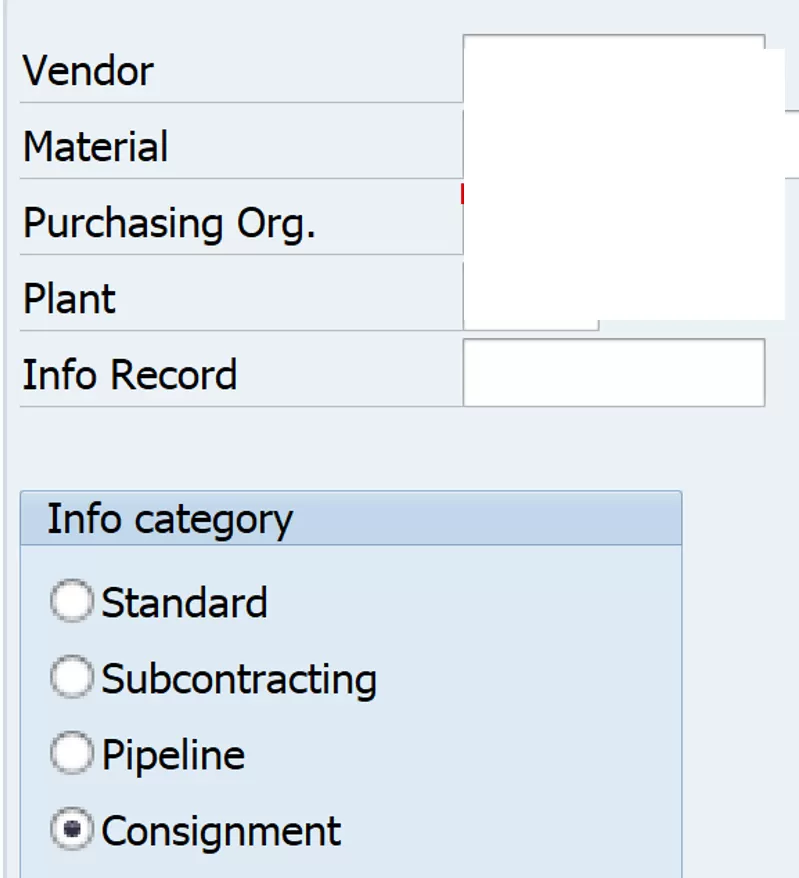
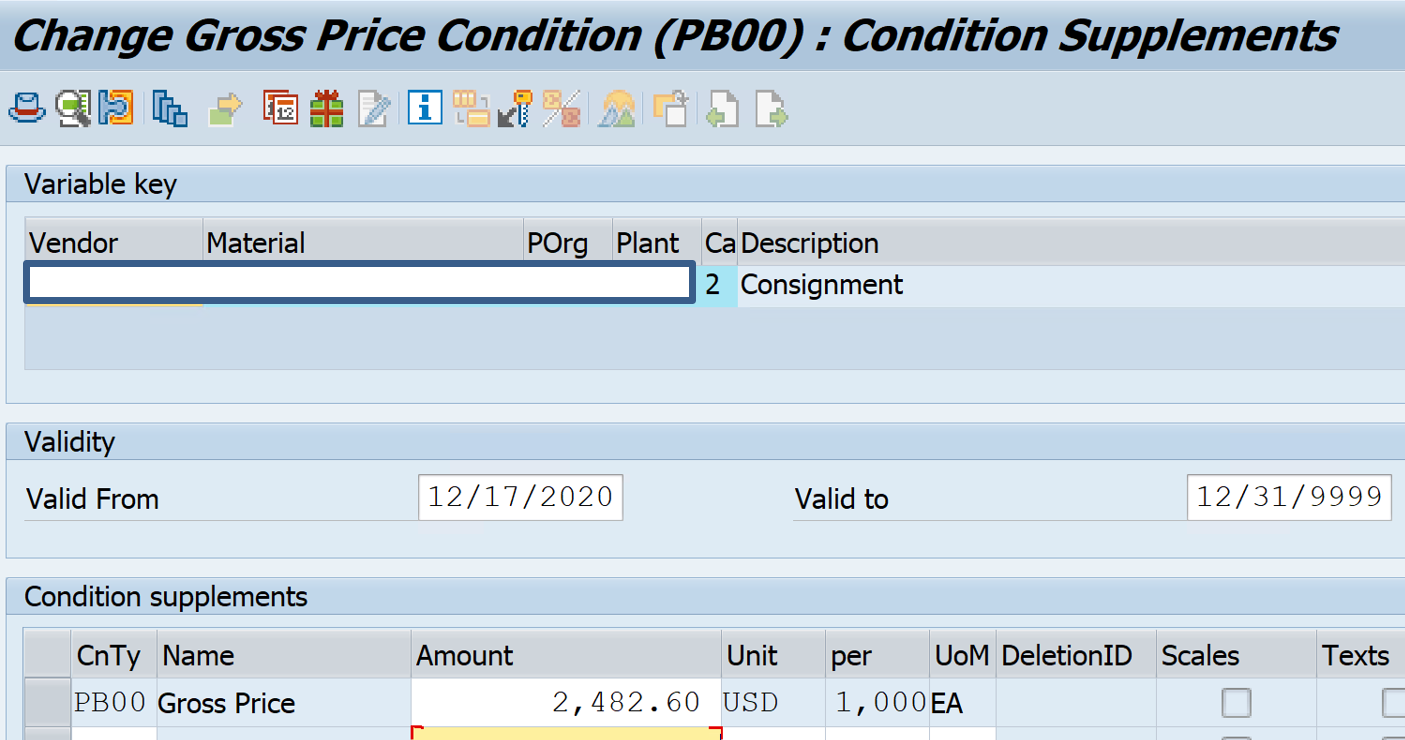
Create Consignment Goods Purchase Order
Transaction Code: ME21N

PO created
Receive Consignment goods from Vendor
Transaction Code: MIGO
Goods are received in Consignment storage, so ownership of goods still with vendor, thus no financial postings made at this point.
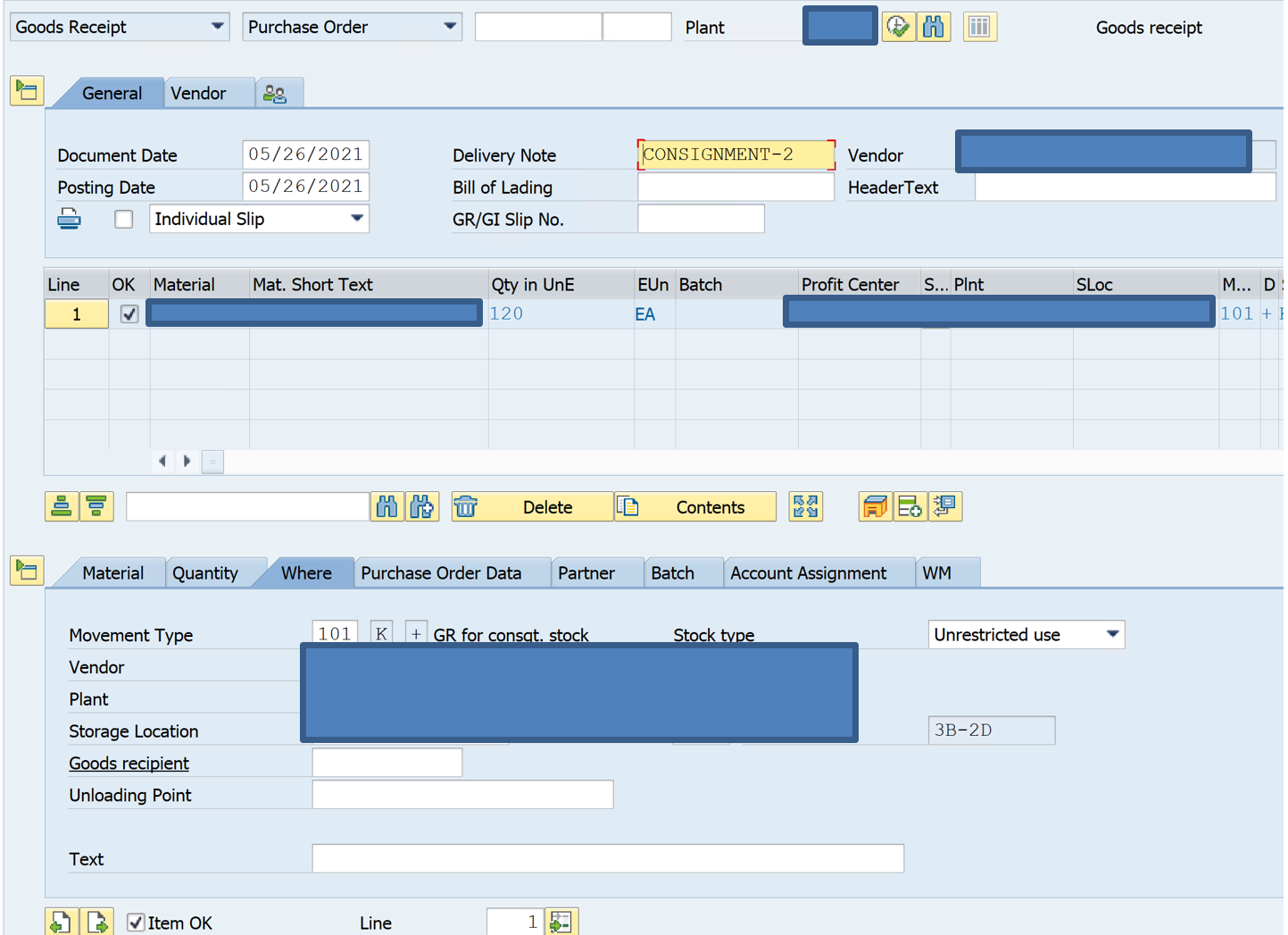
Goods Receipt created
Transfer Consignment Goods to Regular stock owned by company.
Stock Transfer Posting: MB1B
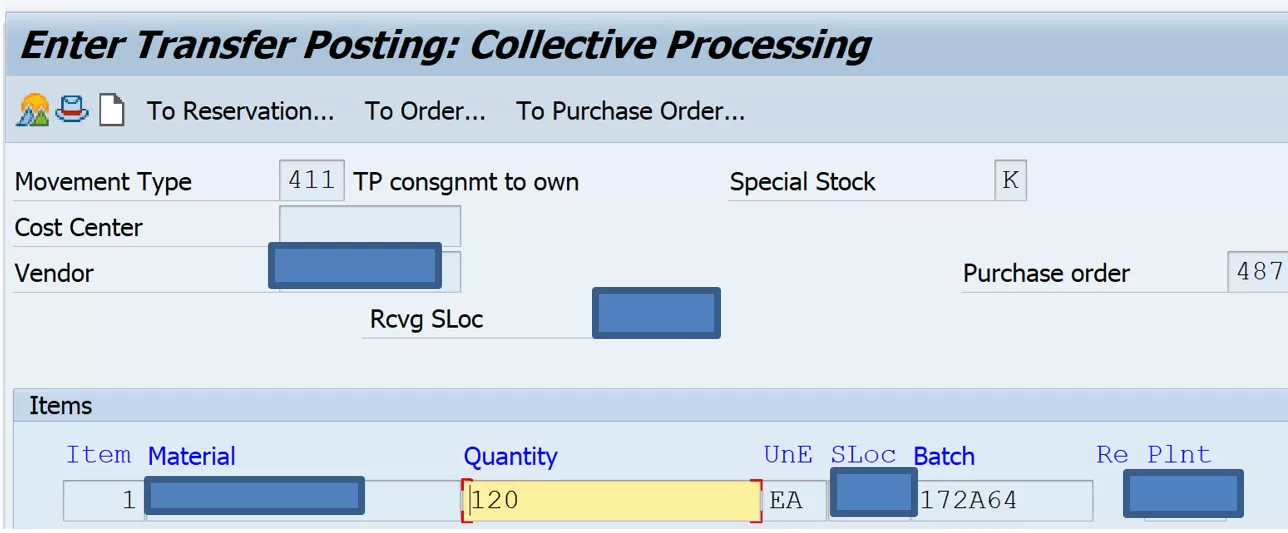
Material Document created with transfer posting.
Finance Posting

Raw material is consumed (Debited) at Standard price.
120*2.531 (MM03) = 303.72 (Account Assignment OBYC-BSX)
GRIR is credited at PIR price.
120 * 2.4826 (ME12) = -297.91 (Account Assignment OBYC-KON-Consignment Payables)
Difference is Posted to PPV account. This is automatic posting configured in transaction code.
Standard Price (303.72) – PIR Price (297.91) = -5.81 (Account Assignment OBYC-AKO)
Please refer section Define Valuation class of SAP FI-MM Integration tutorial
Create Vendor Invoice / Settlement
Vendor Invoice for consignment goods is created using transaction code MRKO and not MIGO. MRKO is run when consignment goods are consumed. Vendor invoice is created at PIR created in step 1. Goods are consumed at standard price maintained in material master for that good. Any difference in PIR & Standard price goes to PPV (Purchase Price variance) account.
Transaction code: MRKO
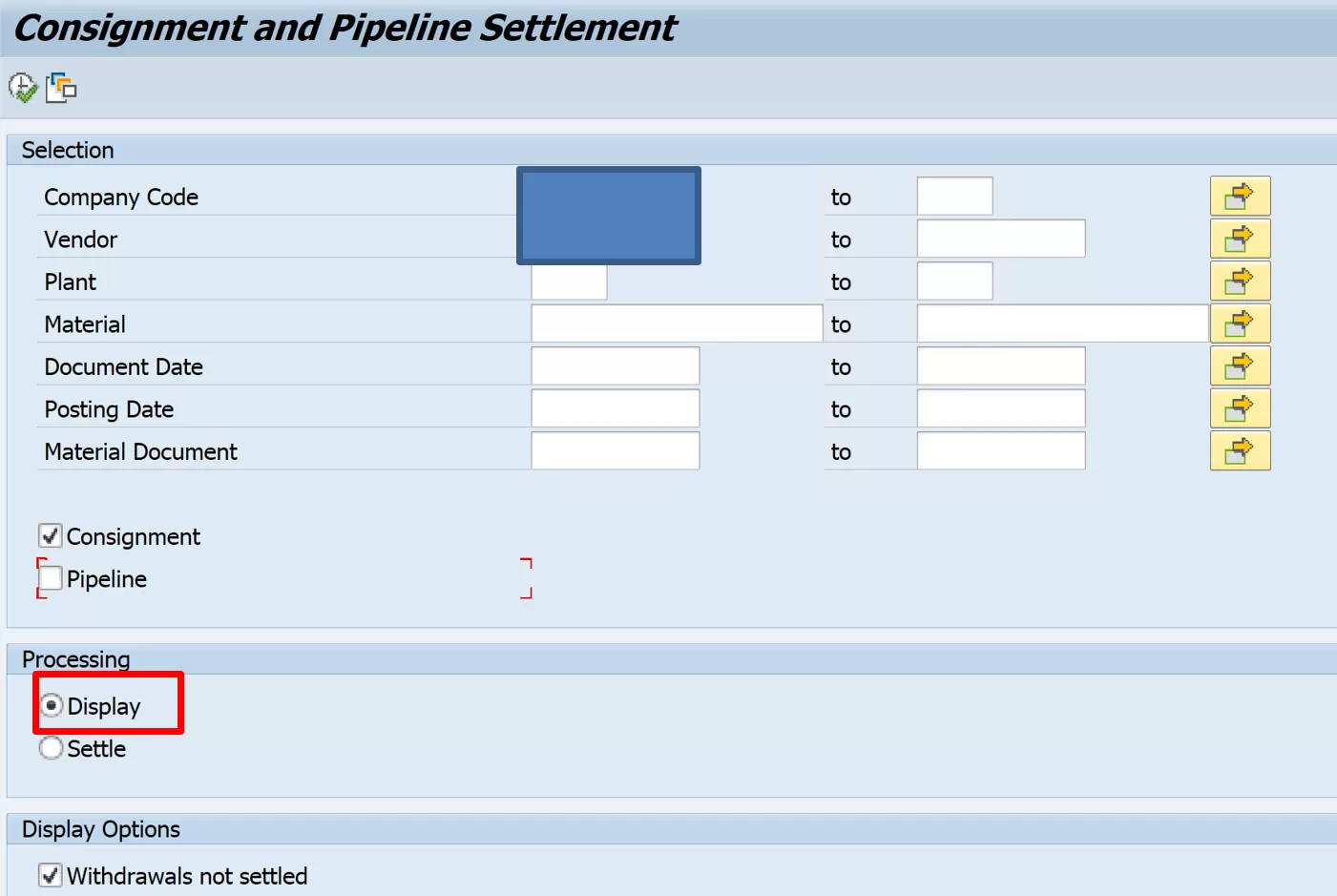

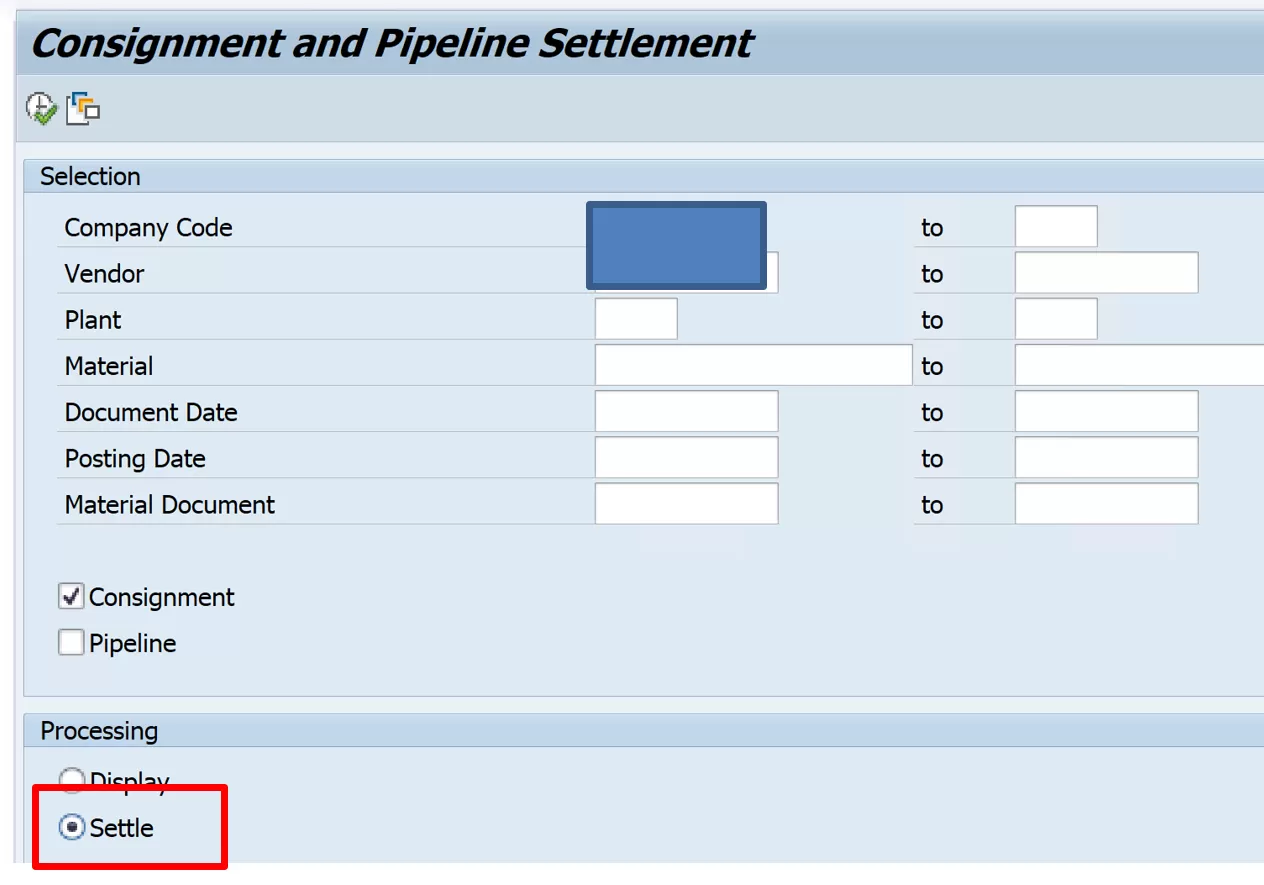

Finance Posting/ Vendor Invoice

Pingback: SAP Tutorials | AUMTECH Solutions-SAP Training